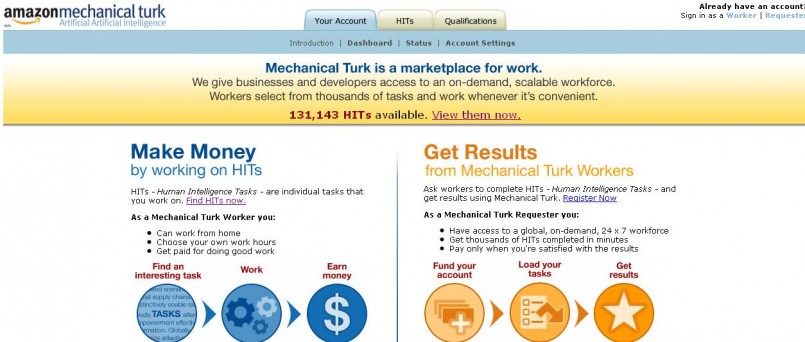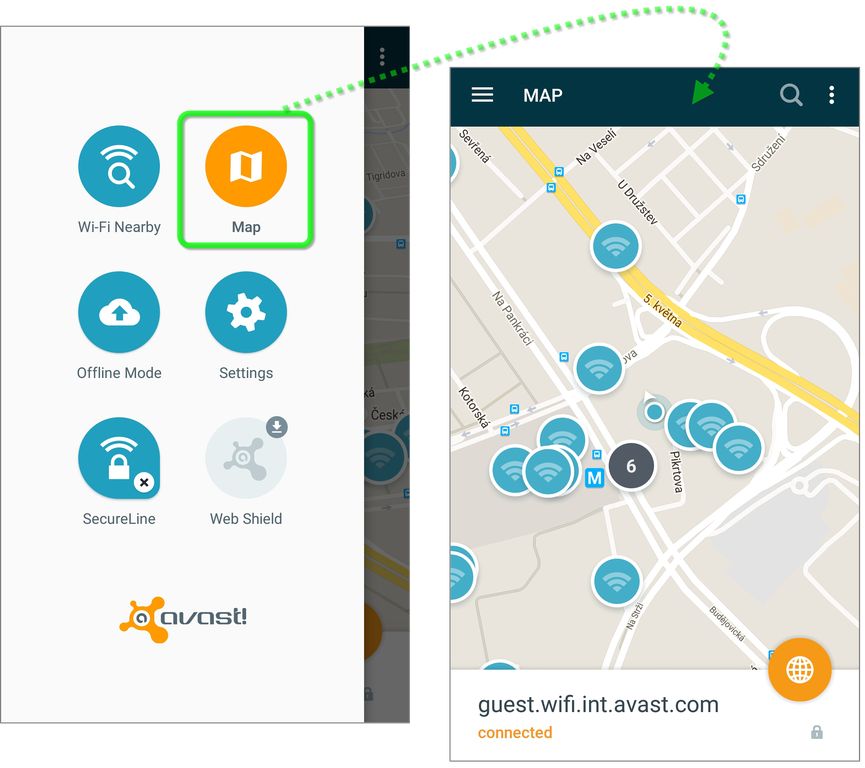
1. The Crowd as a Massive, Instant Online Labor Force

Amazon doesn't stop at books or cloud servers or drone delivery -- they're in also in the day labor business. The Mechanical Turk offers what the company calls "an on-demand, scalable workforce,” that’s the equivalent of 10,000 full-time workers. It's essentially a mix of crowdsourcing and marketplace. Individuals sign on to perform "Human Intelligence Tasks," or HITs, and businesses fund an account and outsource their to-do list. Anyone can simply sign up to begin performing jobs and receive payment when (and only when) the requestors are satisfied with the results.
2. Producing Algorithmic Magic Tricks

(image credit: Netflix)
If you had something funny recommended to you after your housemate used your account to stream Ancient Aliens, you have the Netflix Prize to thank for that brief bit of amusement. In 2006, Netflix put a $1M bounty on its well-known recommendation engine -- in non-technical terms, that thing that shows you what you’d probably like to watch -- and dared the developer universe to come up with something better. When the competition kicked off, it was thought that it would last until at least 2011, offering $50,000 "progress prizes" along the way. Turned out there was no need: In 2009, the company awarded the $1 million to an algorithm devised by team "BellKor's Pragmatic Chaos” (which would also make an awesome band name.)
3. Rapidly Mapping Nuanced Information
(image credit: Avast)
Avast, one of the largest internet security companies in the world, launched a crowdsourcing initiative back in August of 2015, with the goal of mapping the most secure and highly recommended public wifi hotspots around the world. As just about anyone with a smartphone or laptop can relate to these days, being able to find a wifi hotspot on the go can be a real life-save (relatively speaking, of course.) Unfortunately, not all wifi is created equal, and a poorly functioning signal can often be more frustrating than none at all. This is what prompted Avast to reach out to its users, a pool of roughly 230 million individuals, to collect data relating to public Wi-Fi hotspots. The results were spectacular. Avast now has 1 million hotspots in its database globally, including 120,000 in the U.S. It’s a

dding around 5,000 new hotspots each day. The Avast Wi-Fi Finder app has been available since December, but Avast is evidently now confident enough of its product to officially announce it to the world.
4. Creating the Ultimate Focus Group

(image credit: Glossier)
Glossier's Milky Jelly is the result of the first time a beauty company has turned directly to a mass of their customers for input. The face cleanser, which was just released in January, the direct result of aggregated customer comments. If anyone was going to crowdsource a beauty product, it's fitting that it was Glossier. Their founder, Emily Weiss, rose to internet style fame via her blog "Into the Gloss" which inspired her to launch the beauty product line. Doing what she does best, Emily utilized her blog to ask her readers to imagine their "dream face wash" -- and 400 fully formed replies came flooding in. The company's chemist, was able to render 40 different versions from the input, before landing on the final product. The outcome? A huge success. Milky Jelly enjoyed multiple endorsements from beauty publications and excellent customer reviews. Perhaps its biggest asset, though, is all of the extra press it received for being an industry-first.
5. A Force-Multiplier for Educators

Academic crowdsourcing is what I’m calling it,” said Nicholas Hawkins of the University of Queensland, speaking as head of the Biomedical Education Skills and Training network (BEST), through which a virtual laboratory was made available by Australia’s University of New South Wales. Medical students in different settings worldwide are able to work in tangent because their instructors all use this same virtual environment. The internet has always had networks of learners, and it has now officially begun to be adopted by networks of teachers to share courses and content, and to work together to produce increasingly better instruction methodology. BEST has 1,716 registered academic members in more than 30 countries. They're currently teaching 11 subjects, from nursing and allied health to pathology and physiology. That network has inspired a similar operation based at Arizona State University in the US. Both organizations were made possible by technology from the same start-up company, as well as funded by the Bill & Melinda Gates Foundation, to improve basic science instruction. It's pretty simple to imagine that if everyone had access to the resources of the best teachers, everyone would benefit. Students would be exposed to the most effective material and approach, taxpayers wouldn't pay for redundant efforts, and universities could improve their productivity.
Top image by Keoni Cabral, Flickr








